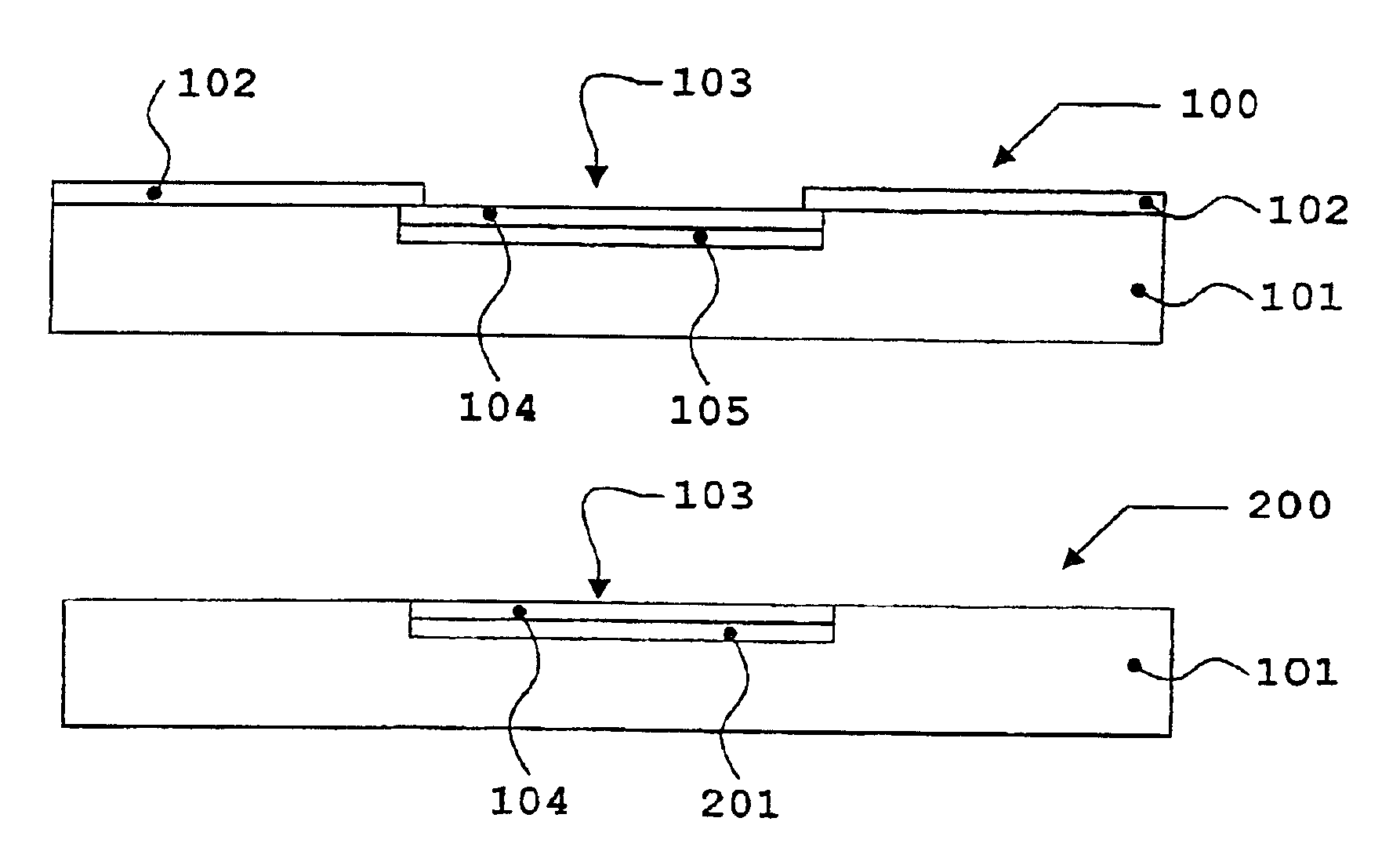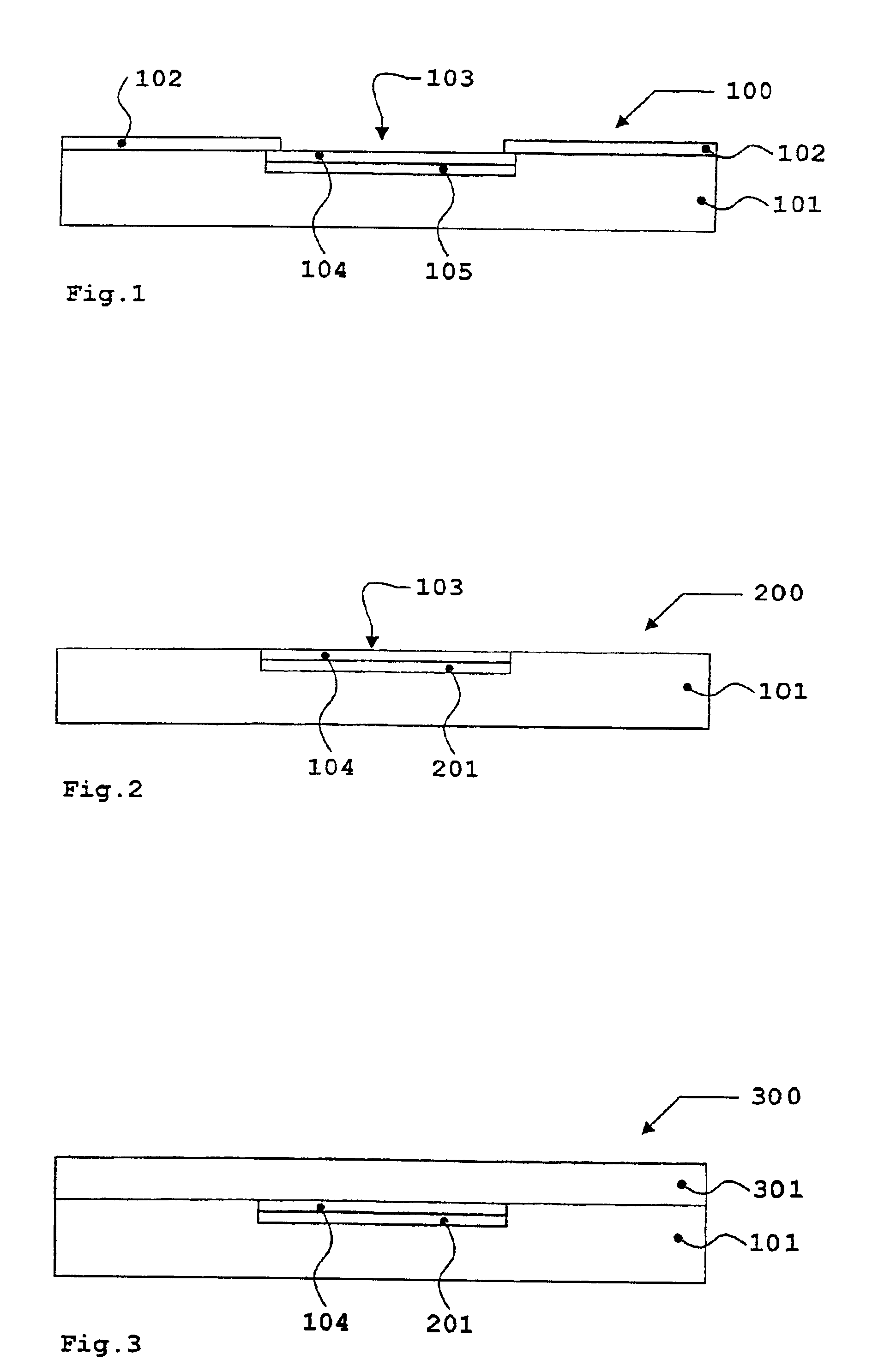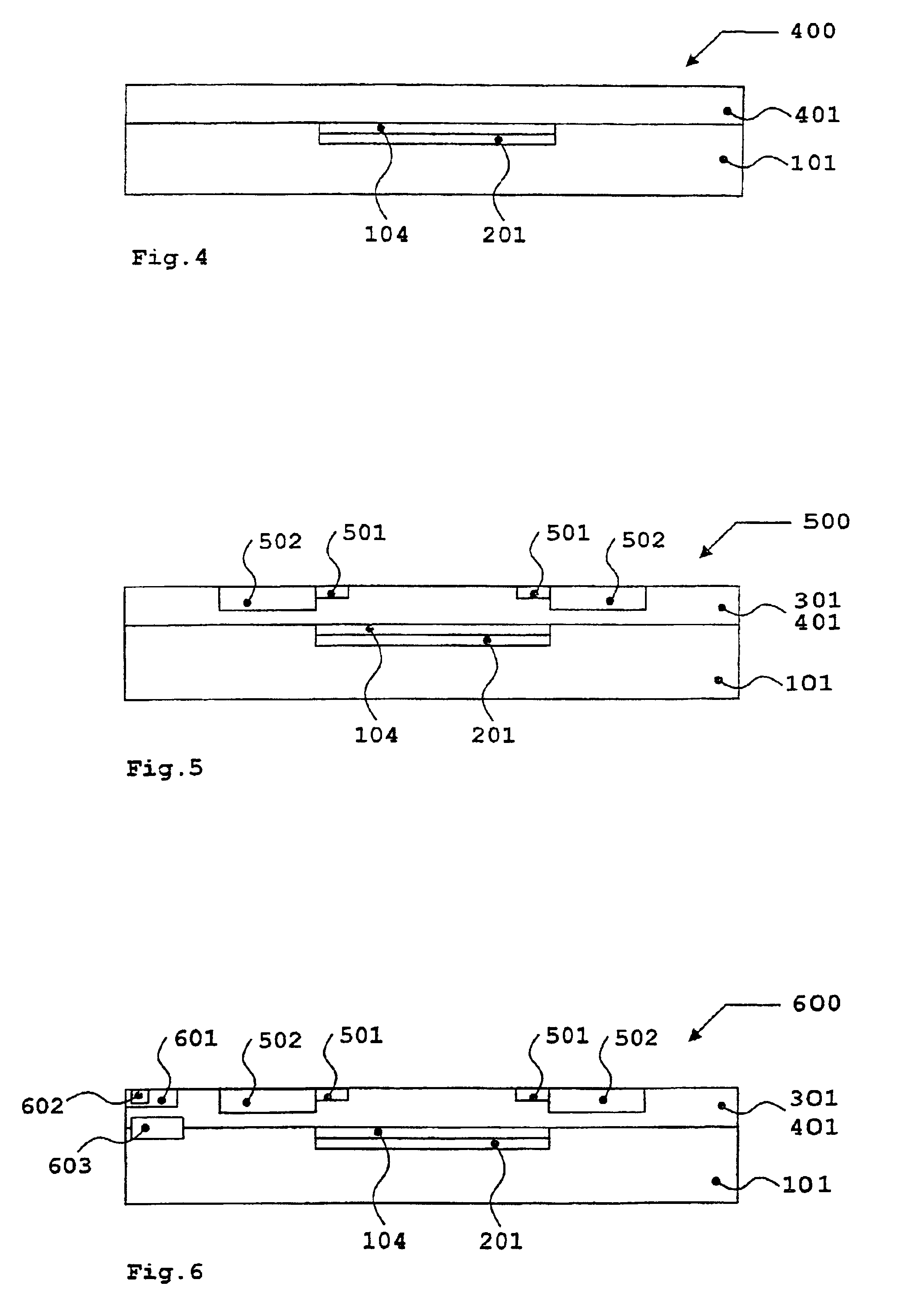Method for production of a semiconductor component and a semiconductor component produced by said method
a technology of semiconductor components and production methods, which is applied in the direction of fluid pressure measurement, instruments, paper/cardboard articles, etc., can solve the problems of complex production of cavities, high cost, and high cost of micromechanical bulk components, and achieve the effect of easy production and cost-effectiveness
- Summary
- Abstract
- Description
- Claims
- Application Information
AI Technical Summary
Benefits of technology
Problems solved by technology
Method used
Image
Examples
Embodiment Construction
[0051]FIG. 1 is a cross-sectional view of an example embodiment of a preliminary stage 100 of absolute pressure sensor 500 illustrated in FIG. 5 To manufacture absolute pressure sensor 500 illustrated in FIG. 5, first a mask layer 102 is produced on the top of a silicon substrate 101, resulting in a region 103 not covered by mask layer 102. The mask layer may, for example, be a nitride layer, an n-doped layer (for p-doped silicon substrate), or another suitable layer which will largely not be attacked by the etching medium used subsequently.
[0052]The top of silicon substrate 101 is electrochemically etched using a suitable etching medium so that the etching medium generates small openings or pores in silicon substrate 101 directly under uncovered region 103. A silicon layer 104 having low porosity results. The etching medium reaches deep-lying regions of silicon substrate 101 through the small openings or pores of silicon layer 104 and also forms pores in the silicon located there. ...
PUM
| Property | Measurement | Unit |
|---|---|---|
| porosity | aaaaa | aaaaa |
| porosity | aaaaa | aaaaa |
| thickness | aaaaa | aaaaa |
Abstract
Description
Claims
Application Information
 Login to View More
Login to View More - R&D
- Intellectual Property
- Life Sciences
- Materials
- Tech Scout
- Unparalleled Data Quality
- Higher Quality Content
- 60% Fewer Hallucinations
Browse by: Latest US Patents, China's latest patents, Technical Efficacy Thesaurus, Application Domain, Technology Topic, Popular Technical Reports.
© 2025 PatSnap. All rights reserved.Legal|Privacy policy|Modern Slavery Act Transparency Statement|Sitemap|About US| Contact US: help@patsnap.com



